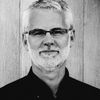Hanukkah falls on Thanksgiving next week, and have I got a book for you: David Laskin's The Family. Reviews in the Washington Post and the Wall Street Journal will tell you what I know: David Laskin's The Family: Three Journeys into the Heart of the Twentieth Century is a brilliant epic.
Reviews in the Washington Post and the Wall Street Journal will tell you what I know: David Laskin's The Family: Three Journeys into the Heart of the Twentieth Century is a brilliant epic.
The Family tells the true story of how Laskin's family of Torah scribes and humble shopkeepers split into three branches at the turn of the last century.
One branch of Laskin's family came to the US and founded the fabulous Maidenform Bra Company. This branch embodied the American Dream.
Another branch immigrated to Palestine in the 1920s.
Wildly idealistic pioneers, cousins Chaim and Sonia fell in love on the parched hillsides of the Galilee. Their wedding photo is breathtaking.
The third branch stayed put in Poland. Mothers, teachers, big-eared and knobby-kneed children remained behind in Europe and perished -- all of them -- in the Holocaust.
I was hooked right away, in the book's first chapter, when I read Laskin's description of his great-great-grandfather Shimon Dov HaKohen, carrying on the family work of the scribe:
When he sat down at his table, closed his eyes to pray for perfection, and took up his quill pen, Shimon Dov glowed with God's radiance. His forked beard was so long that it brushed the soft surface of the parchment when he bent his head to write. Precisely 304,805 letters composed the 79,847 Hebrew words of the Torah, and Shimon Dov knew every stroke as intimately as a tailor knows his thread or a soldier his gun.
This is typical of Laskin's approach throughout: capturing the life of the spirit with cinematic clarity, braiding together the divine and the daily, making us feel God's presence in the hands and hunched shoulders of an ordinary man.
The Wall Street Journal review says, "Mr. Laskin's chronicle could have been written in tears -- of torment and scarce joy." But the story of how Laskin's great-aunt Itel -- an ambitious four foot eleven inch chain smoking immigrant with a heavy accent -- invented the first Maidenform bra could have been written in tears of laughter.
An upmarket seamstress in roaring twenties Manhattan, Itel bridled against the fashion of the day that required women to become boyishly flat-chested. It all came to a head one day when a rich, bobbed woman walked into her chic West 57th Street shop:
Itel knew at a glance that, when the dress was done, neither she nor the patroness would be 100 percent happy.
The problem was the patroness's bust. The problem, to be precise, was that she had a bust. Soft yet firm, full and swelling, round, smooth, perfectly symmetrical, the perfumed essence of American femininity made flesh--this lovely pair of breasts was doomed to be squashed into submission by the dictates of 1920s fashion.
So Itel went to work. The result? A daring invention with satin shoulder straps, silk rosebuds, and the two-cupped bliss of comfort that made Itel one very rich woman.
But there are other tears to be wept in The Family. The book becomes electrifying when Laskin gets to the Holocaust. In an eerie parallel to the sacrifice of Isaac in Genesis 22:6 -- "And Abraham took the wood of the burnt offering, and laid it upon Isaac his son" -- Laskin describes how sixteen year old Shimon Senitski was forced to carry logs to a forest clearing outside the Nazi slave labor camp of Klooga in Estonia, how the boy was shot in the head with the other surviving slaves just days before the camp was liberated, and how his body was incinerated in a vast pyre of logs and corpses.
I have read that passage in Genesis scores, maybe hundreds of times: but I will never read it in the way same after weeping over Laskin's account of the pyres lit at Klooga 69 years ago.
In The Family, Laskin writes, "History made and broke my family in the twentieth century" -- and he recounts this making and breaking, be it in the bra factories of New Jersey, the citrus groves of Palestine or the killing pits of Lithuania, with equal ferocity and brilliance.
Take The Family home to the family this Thanksgiving weekend. And if not for Hanukkah, for Christmas, then.
Wedding photo courtesy of David Laskin and his family
